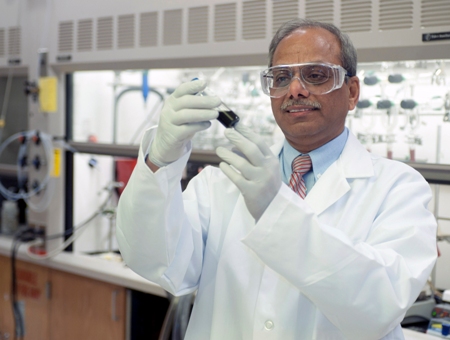A research team led by Rakesh Agrawal, a professor of chemical engineering at Purdue University, is developing solar cells using ink printed on layers of a flexible supporting material such as copper zinc tin sulfide (CZTS).
 Purdue researcher Rakesh Agrawal is leading work to develop solar cells that might be manufactured using special ink printed onto sheets of a supporting material.
Purdue researcher Rakesh Agrawal is leading work to develop solar cells that might be manufactured using special ink printed onto sheets of a supporting material.
The work could lead to the development of new, inexpensive solar cells that might compete with other solar technologies.
The U.S. Department of Energy has offered a $750,000 grant for the solar project. The project mainly focuses on achieving critical requirements like mass production at low cost. Moreover, manufacturing should not be limited due to unavailability of materials. Till date, no solar technologies have met these constraints.
The new solar cells depend on the development of a special ink using nanocrystals that are made of copper zinc tin sulfide (CZTS) material. As the material is available in abundance, the CZTS PV cell does not create any resource problems. Agrawal's lab has created the CZTS-based solar cells with 8.4% efficiency, the second highest efficiency solar cells based on CZTS material. The main aim of the project it to achieve 15% efficiency or more.
The innovative solar cells must have the potential to generate terawatts of electricity at a cost of 50 cents per watt. The cells can be produced using a process that comprises creation of nanocrystals, formulation of ink, and finally printing it over a supporting material. Once the ink is applied, the PV cells are heated to approximately 500°C, called sintering process, to blend the nanoparticles together. Purdue research team will produce models of the sintering process.